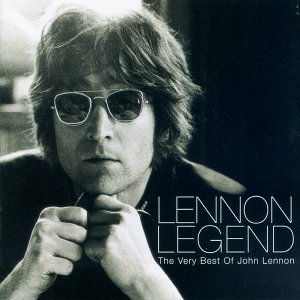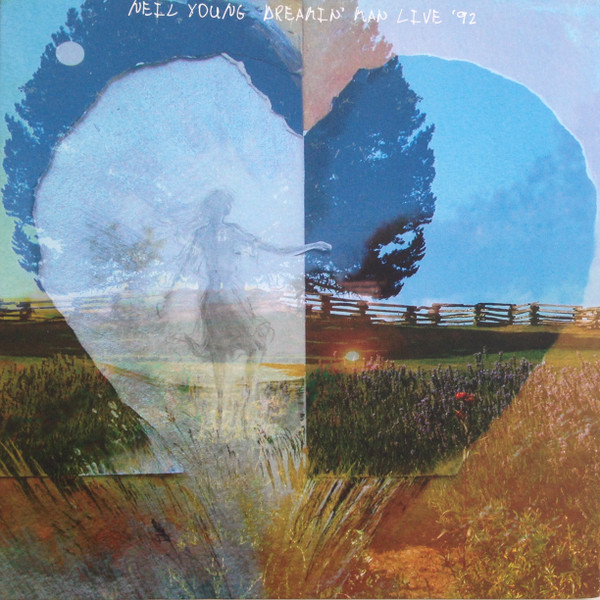 The ambitious tour that followed Diamond Dogs was soon overtaken by the Philly sound, epitomized by the backing vocalists, squealing sax and wah-wah guitars all over David Live. There are a few good renditions here, but the overall effect is about as seasick as his pallor on the jacket photos. The visuals of the stage don’t translate to vinyl, and the Spiders are sorely missed.
The ambitious tour that followed Diamond Dogs was soon overtaken by the Philly sound, epitomized by the backing vocalists, squealing sax and wah-wah guitars all over David Live. There are a few good renditions here, but the overall effect is about as seasick as his pallor on the jacket photos. The visuals of the stage don’t translate to vinyl, and the Spiders are sorely missed.Mike Garson’s tinkling piano brings in “1984”, supposedly the overture for the production. “Rebel Rebel” is dominated by the “yi-yi” backing vocals from that odd single mix, but then it’s a detour through “Moonage Daydream”; Earl Slick’s good, but he’s no Mick Ronson, and David Sanborn’s sax dominates. The complete “Sweet Thing” suite is a highlight of the side, assuming you already like that song.
The piano outro leads into “Changes”, wherein the children are no longer spit on, but something that rhymes with it. “Suffragette City” is a crowd-pleaser, but the Latin twist on “Aladdin Sane” makes the piano solo even more out of place. “All The Young Dudes” makes its first appearance on a Bowie album; Mott the Hoople’s version still wins. Once again, a side closes with a winner, this time in “Cracked Actor”.
“Rock ‘N Roll With Me” proves its concert potential, and even “Watch That Man” sounds good with this band. A cover of “Knock On Wood” today brings to mind either Amii Stewart’s disco version or the one from Road House; amazingly, this was the single. “Diamond Dogs” has that same flutter effect from the album; the sleeve acknowledged that some post-production sweetening was applied to beef up the sound, and this is one obvious example.
“Big Brother” keeps the concept going, complete with a reprise “Chant Of The Ever-Circling Skeletal Family”. He’s pretty hoarse by the time of “Width Of A Circle”, a bold addition to the setlist, and “The Jean Genie” is basically removed of its strut. Finally, and most likely because he didn’t know how else to end, “Rock ‘N Roll Suicide” is the finale.
It’s been suggested that the release of David Live was enforced by the label simply to make some of their cash back from the tour. As a current snapshot of Bowie’s image it was accurate, but one wishes the portrait were more flattering. Subsequent reissues haven’t changed that opinion. Rykodisc added two tracks plus band intros to the set; these included the obscure cover “Here Today, Gone Tomorrow” and “Time”, which gives Mike Garson another showcase for stumbling over the piano. The 2005 reissue added two more songs (“Space Oddity” sung through a telephone and the live take of “Panic In Detroit” used as a B-side) and placed everything in the original setlist order. These additions admittedly beef up the second half of the show, but only just.
 By the time he’d left the planet for good, the Record Store Day phenomenon enabled the labels to release a dizzyingly increasing variety of rare material, most of which was rare simply because they hadn’t existed yet. Perhaps not to have too much similar live material in the box set commemorating the period between Ziggy and Berlin, the estate authorized a standalone release of Cracked Actor, which presented an oft-booted show from two months after the ones used for David Live. On its way to evolving into the “Philly Dogs” era, the rhythm section is different and much busier, Mike Garson is the only pianist, and Carlos Alomar has joined on rhythm guitar, as have several singers from the sessions for the next studio album. The band’s a little tighter, the recording’s a little hotter, and two new songs take the place of four that were dropped. “It’s Gonna Be Me” ultimately would not make said album in progress, while “John I’m Only Dancing (Again)” (eventually issued as a single after he was past it) now closes the show, coming after “Rock ‘N Roll Suicide” and leaving the proceedings completely amped up.
By the time he’d left the planet for good, the Record Store Day phenomenon enabled the labels to release a dizzyingly increasing variety of rare material, most of which was rare simply because they hadn’t existed yet. Perhaps not to have too much similar live material in the box set commemorating the period between Ziggy and Berlin, the estate authorized a standalone release of Cracked Actor, which presented an oft-booted show from two months after the ones used for David Live. On its way to evolving into the “Philly Dogs” era, the rhythm section is different and much busier, Mike Garson is the only pianist, and Carlos Alomar has joined on rhythm guitar, as have several singers from the sessions for the next studio album. The band’s a little tighter, the recording’s a little hotter, and two new songs take the place of four that were dropped. “It’s Gonna Be Me” ultimately would not make said album in progress, while “John I’m Only Dancing (Again)” (eventually issued as a single after he was past it) now closes the show, coming after “Rock ‘N Roll Suicide” and leaving the proceedings completely amped up.
 Three years later, another Record Store Day release presented yet another glimpse of his transformation in this period. By the time I’m Only Dancing (The Soul Tour 74) was recorded, the Diamond Dogs stage and concept had been jettisoned, and he was pushing the new songs, plus his “Footstompin’/Shimmy Like My Sister Kate” medley. The overall vibe is more dirty than slick, and he’s fairly hoarse throughout, but the sound is impeccable and it’s interesting to hear “Young Americans” before it became a rock staple.
Three years later, another Record Store Day release presented yet another glimpse of his transformation in this period. By the time I’m Only Dancing (The Soul Tour 74) was recorded, the Diamond Dogs stage and concept had been jettisoned, and he was pushing the new songs, plus his “Footstompin’/Shimmy Like My Sister Kate” medley. The overall vibe is more dirty than slick, and he’s fairly hoarse throughout, but the sound is impeccable and it’s interesting to hear “Young Americans” before it became a rock staple.
David Bowie David Live (1974)—2
1991 Rykodisc: same as 1974, plus 3 extra tracks
2005 Virgin: same as 1991, plus 2 extra tracks
Bowie Cracked Actor (Live Los Angeles ’74) (2017)—2½
Bowie I’m Only Dancing (The Soul Tour 74) (2020)—2½


.jpg)




.jpg)
:format(jpeg):mode_rgb():quality(90)/discogs-images/R-428736-1112161310.jpg.jpg)









